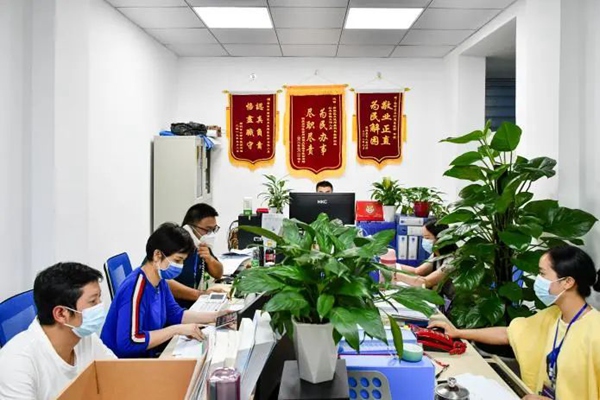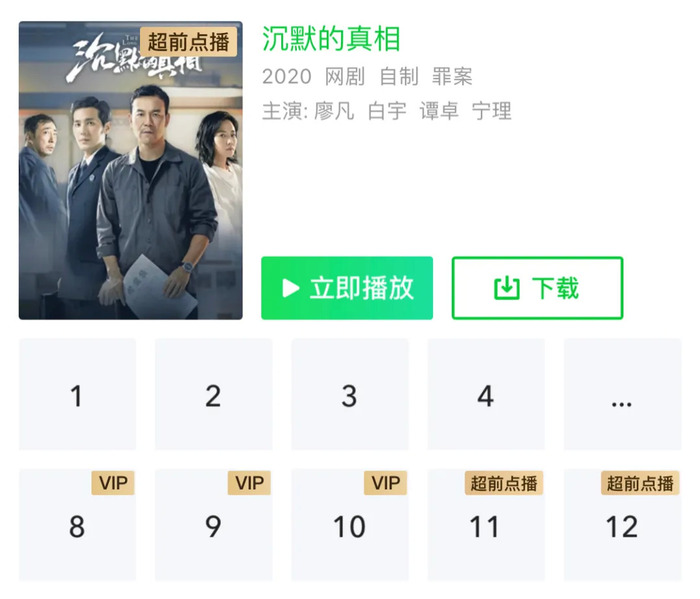Cctv newsAccording to the website of the Ministry of Agriculture and Rural Affairs on September 7, the Measures for the Administration of Animal Quarantine was deliberated and adopted at the 9th executive meeting of the Ministry of Agriculture and Rural Affairs on August 22, 2022, and is hereby promulgated and shall come into force as of December 1, 2022.
Measures for the administration of animal quarantine
Chapter I General Provisions
Article 1 In order to strengthen the management of animal quarantine activities, prevent, control, purify and eliminate animal epidemics, prevent and control zoonotic infectious diseases, and ensure public health safety and human health, these Measures are formulated in accordance with the Law of People’s Republic of China (PRC) on Animal Epidemic Prevention.
Article 2 These Measures shall apply to the quarantine of animals and animal products and their supervision and management activities within the territory of People’s Republic of China (PRC).
Measures for the quarantine of terrestrial wildlife shall be formulated separately by the Ministry of Agriculture and Rural Affairs in conjunction with the State Forestry and Grassland Bureau.
Article 3 Animal quarantine shall follow the principle of combining process supervision, risk control, regionalization and traceability management.
Article 4 The Ministry of Agriculture and Rural Affairs is in charge of the national animal quarantine work.
The competent agricultural and rural departments of the local people’s governments at or above the county level shall be in charge of animal quarantine within their respective administrative areas and shall be responsible for the supervision and administration of animal quarantine.
The competent agricultural and rural departments of the people’s governments at the county level may, according to the needs of animal quarantine work, send animal health supervision institutions or official veterinarians to townships, towns or specific areas.
The animal epidemic prevention and control institutions established by the people’s governments at or above the county level shall provide technical support for animal quarantine and its supervision and management.
Article 5 The Ministry of Agriculture and Rural Affairs shall formulate, adjust and publish quarantine regulations to clarify the scope, objects and procedures of animal quarantine.
Article 6 The Ministry of Agriculture and Rural Affairs shall strengthen information construction, establish a unified national information system for animal quarantine management, and realize the traceability of animal quarantine information.
Animal health supervision institutions at or above the county level shall do a good job in the management of animal quarantine information and data within their respective administrative areas.
Units and individuals engaged in animal breeding, slaughtering, management, transportation, isolation and other activities shall fill in the information related to animal quarantine in the information system of animal quarantine management as required.
Article 7 The supervising agencies for animal health of local people’s governments at or above the county level shall be responsible for animal quarantine within their respective administrative areas, and carry out quarantine in accordance with the Law of People’s Republic of China (PRC) on Animal Epidemic Prevention, these Measures and quarantine regulations.
The official veterinarian of the supervising agency for animal health shall carry out quarantine, issue an animal quarantine certificate and affix a quarantine mark, and be responsible for the quarantine conclusion.
Chapter II Quarantine Declaration
Article 8 The State implements the animal quarantine declaration system.
Where animals or animal products are sold or transported, the owner shall declare quarantine to the local supervising agency for animal health three days in advance.
Where an animal is slaughtered, it shall report to the local supervising agency for animal health for quarantine six hours in advance; Those who kill animals in a hurry may declare at any time.
Article 9 Where relevant susceptible animals and susceptible animal products are imported into an area with no specified animal epidemic disease, the owner shall, in addition to reporting quarantine to the supervising agency for animal health at the place of export according to Article 8 of these Measures, also report quarantine to the supervising agency for animal health at the place of import three days before the departure. If susceptible animals are imported, they shall report to the supervising agency for animal health where the quarantine field is located; Where susceptible animal products are imported, they shall be declared at the place designated by the provincial animal health supervision institution at the place where they are imported.
Article 10 The supervising agency for animal health shall, according to the needs of animal quarantine work, reasonably set up animal quarantine declaration points and make them public.
The competent agricultural and rural departments of the local people’s governments at or above the county level shall take effective measures to strengthen the construction of animal quarantine declaration points.
Article 11 Anyone who declares quarantine shall submit a quarantine declaration form and other materials specified by the Ministry of Agriculture and Rural Affairs, and be responsible for the authenticity of the declaration materials.
The declaration and quarantine shall be made at the declaration point or by fax or electronic data exchange.
Twelfth animal health supervision institutions shall, after receiving the declaration, timely review the application materials. If the application materials are complete, it shall be accepted; In any of the following circumstances, it shall not be accepted, and the reasons shall be explained:
(a) the application materials are incomplete, and the supervising agency for animal health has informed the applicant of the contents that need to be corrected once on the spot or within three days, but the applicant refuses to make corrections;
(two) the declared animals and animal products do not belong to the administrative area;
(3) The declared animals and animal products are not within the scope of animal quarantine;
(4) Animals and animal products that should not be quarantined as stipulated by the Ministry of Agriculture and Rural Affairs;
(five) other circumstances that are not accepted as prescribed by laws and regulations.
Article 13 After accepting the declaration, the supervising agency for animal health shall assign official veterinarians to carry out quarantine inspection, and may arrange inspection assistants to assist the official veterinarians to verify the information at the scene or at the designated place and carry out clinical health inspection.
Chapter III Quarantine of Origin
Article 14 An animal quarantine certificate shall be issued if the animals sold or transported meet the following conditions after quarantine:
(1) Breeding farms (households) from non-blockade areas and where relevant animal epidemics have not occurred;
(two) from the farm (household) that meets the relevant provisions of risk classification management;
(3) The application materials conform to the quarantine regulations;
(four) the identification of livestock and poultry meets the requirements;
(five) compulsory immunization in accordance with the provisions, and within the effective protection period;
(6) Clinical examination of health;
(seven) the need for laboratory disease detection, the test results are qualified.
If the semen, eggs, embryos and eggs of breeding animals sold or transported meet the requirements of item 1 of the first paragraph after quarantine, the application materials meet the requirements of item 3 of the first paragraph, and the donor animals meet the requirements of items 4, 5, 6 and 7 of the first paragraph, an animal quarantine certificate shall be issued.
Products such as hides, raw wool, cashmere, blood, horns, etc., which are sold and transported, whose farms (households) meet the requirements of Item 1 of Paragraph 1 after quarantine, whose application materials meet the requirements of Item 3 of Paragraph 1, and whose donor animals meet the requirements of Item 4, Item 5, Item 6 and Item 7 of Paragraph 1, and have passed the disinfection according to the regulations, shall issue an animal quarantine certificate.
Fifteenth sale or transportation of aquatic animals, such as parents, larvae, larvae, fertilized eggs, hair eggs and other genetic breeding materials, if the quarantine meets the following conditions, an animal quarantine certificate shall be issued:
(a) from the seed production field where no relevant aquatic animal epidemic has occurred;
(2) The application materials conform to the quarantine regulations;
(3) Clinical examination of health;
(four) the need for laboratory disease detection, the test results are qualified.
Other aquatic animals and their products other than aquatic fingerlings are not subject to quarantine.
Article 16 Where an animal that has obtained a certificate of quarantine of its place of origin continues to be sold or transported from a market specializing in animals, or needs to be transported after animal display, performance or competition, an animal quarantine certificate shall be issued if it meets the following conditions after quarantine:
(1) Having the original animal quarantine certificate and complete entry and exit records;
(two) the identification of livestock and poultry meets the requirements;
(3) Clinical examination of health;
(four) the original animal quarantine certificate exceeds the validity period of transportation, and it is necessary to carry out laboratory disease detection according to the regulations, and the test results are qualified.
Article 17 Dairy and breeding animals imported from different provinces, autonomous regions and municipalities directly under the Central Government shall be observed in isolation in isolation yards or isolation houses in breeding grounds after arriving at the place of import, and the isolation period shall be 30 days. Only those who pass the isolation observation can be raised in mixed groups; Unqualified, handled in accordance with the relevant provisions. If it is necessary to continue transportation after passing the quarantine observation, the owner shall declare quarantine and obtain the animal quarantine certificate.
The isolation of dairy and breeding animals imported from different provinces, autonomous regions and municipalities directly under the Central Government into areas without specified animal epidemics shall be implemented in accordance with the provisions of Article 26 of these Measures.
Article 18 Animals and animal products sold or transported shall not leave the place of origin until they have obtained the animal quarantine certificate.
Chapter IV Slaughtering and Quarantine
Article 19 The supervising agencies for animal health shall send (send out) official veterinarians to slaughter and processing sites established according to law for quarantine. Slaughtering and processing sites shall provide facilities such as official veterinary quarantine room, studio and quarantine console that are suitable for quarantine work.
Article 20 Animals to be slaughtered entering the slaughtering and processing sites shall be accompanied by animal quarantine certificates and affixed with animal and poultry labels that meet the requirements.
Article 21 Slaughtering and processing sites shall strictly implement the system of animal entry inspection and registration, inspection and inspection for animals to be slaughtered, and check the animal quarantine certificate and livestock and poultry identification of animals to be slaughtered. If animals are found to be infected or suspected to be infected, they shall immediately report to the local agricultural and rural authorities or animal epidemic prevention and control institutions.
Article 22 Official veterinarians shall check the health status of animals to be slaughtered, carry out synchronous quarantine and necessary laboratory disease detection during slaughter, and fill in slaughter quarantine records.
Article 23 If the quarantine inspection meets the following conditions, an animal quarantine certificate shall be issued for its carcass, raw fur, wool, viscera, blood, hooves, head and horns, and the quarantine inspection seal shall be affixed or other quarantine marks shall be affixed:
(a) the application materials comply with the provisions of the quarantine regulations;
(two) the animal to be slaughtered is clinically healthy;
(three) synchronous quarantine;
(four) the need for laboratory disease detection, the test results are qualified.
Twenty-fourth official veterinarians shall recover the animal quarantine certificates attached to the animals to be slaughtered in the slaughtering and processing places, and upload the relevant information to the animal quarantine management information system. The storage period of the recovered animal quarantine certificate shall not be less than twelve months.
Chapter V Animal Quarantine in Areas Without Prescribed Animal Diseases
Article 25 Whoever transports relevant susceptible animals and animal products to an area with no specified animal epidemic disease shall, in addition to the animal quarantine certificate issued by the supervising agency for animal health at the place of export, obtain the animal quarantine certificate in accordance with the provisions of Articles 26 and 27 of these Measures.
Article 26 Relevant susceptible animals imported into areas without specified animal epidemic diseases shall be isolated in isolation places designated by provincial animal health supervision institutions at the place of import, and the isolation and quarantine period shall be 30 days. If the quarantine inspection is qualified, the animal quarantine certificate shall be issued by the official veterinarian of the county-level animal health supervision institution where the quarantine field is located.
Article 27 Relevant susceptible animal products imported into an area with no specified animal epidemic disease shall be quarantined at the place designated by the provincial supervising agency for animal health at the place where they are imported, in accordance with the relevant quarantine requirements of the area with no specified animal epidemic disease. Those who pass the quarantine inspection shall be issued an animal quarantine certificate by the official veterinarian of the local county-level animal health supervision institution.
Chapter VI Official Veterinarians
Article 28 The State implements the official veterinary appointment system. An official veterinarian shall meet the following conditions:
(1) Staffing of the supervising agency for animal health, or staffing of other institutions that receive professional guidance from the supervising agency for animal health;
(2) Engaged in animal quarantine;
(3) Having a junior title or above in animal husbandry, veterinary and aquatic products or a junior college degree or above in related majors or having been engaged in animal epidemic prevention and other related work for more than three years;
(4) Receiving pre-job training and passing the examination;
(5) It meets other conditions stipulated by the Ministry of Agriculture and Rural Affairs.
Twenty-ninth animal health supervision institutions at or above the county level shall put forward suggestions on the appointment of official veterinarians and report them to the competent agricultural and rural departments at the same level for examination and approval. If it is approved, it shall be confirmed by the provincial agricultural and rural authorities according to the procedures, numbered uniformly and reported to the Ministry of Agriculture and Rural Affairs for the record.
Official veterinarians confirmed by provincial agricultural and rural authorities shall be appointed by their local agricultural and rural authorities, issue official veterinary certificates and publish the list of personnel.
The format of the official veterinary certificate shall be uniformly stipulated by the Ministry of Agriculture and Rural Affairs.
Article 30 An official veterinarian shall hold an official veterinary certificate when carrying out animal quarantine work. It is forbidden to forge, alter, lend or otherwise illegally use the official veterinary certificate.
Article 31 The Ministry of Agriculture and Rural Affairs shall formulate the national official veterinary training plan.
The competent agricultural and rural departments of the local people’s governments at or above the county level shall formulate official veterinary training plans in their respective administrative areas, provide necessary training conditions, set assessment indicators, and conduct regular training and assessment of official veterinarians.
Thirty-second official veterinarians who carry out animal quarantine may be assisted by the inspectors. Co-inspectors shall not issue animal quarantine certificates.
The conditions and management requirements of the inspectors shall be stipulated by the provincial agricultural and rural authorities.
Article 33 Licensed veterinarians or animal epidemic prevention technicians in animal farms and slaughter and processing places shall assist official veterinarians in animal quarantine.
Thirty-fourth of the personnel engaged in animal quarantine work, the relevant units in accordance with state regulations, take effective health protection, medical and health care measures, the full implementation of animal husbandry and veterinary medical and health benefits and other related benefits.
The supervising agencies for animal health and official veterinarians who have made contributions to animal quarantine shall be commended and rewarded in accordance with the relevant provisions of the state.
Chapter VII Management of Animal Quarantine Badges and Signs
Article 35 Animal quarantine badge marks include:
(1) Animal quarantine certificate;
(2) animal quarantine seals and animal quarantine marks;
(3) Other animal quarantine badges and signs stipulated by the Ministry of Agriculture and Rural Affairs.
Article 36 The content, format, specifications, coding and production requirements of animal quarantine badges and signs shall be uniformly stipulated by the Ministry of Agriculture and Rural Affairs.
Article 37 The supervising agencies for animal health at or above the county level shall be responsible for the management of animal quarantine badges and signs within their respective administrative areas, establish a management system for animal quarantine badges and signs, and order, keep and distribute them in strict accordance with procedures.
Article 38 No unit or individual may forge, alter or transfer animal quarantine badge marks, or hold or use forged, altered or transferred animal quarantine badge marks.
Chapter VIII Supervision and Administration
Article 39 It is forbidden to slaughter, market or transport animals that should be quarantined according to law but have not been quarantined or failed to pass quarantine inspection.
It is forbidden to produce, manage, process, store and transport animal products that should be quarantined according to law but have not been quarantined or failed to pass quarantine inspection.
Article 40 An official veterinarian shall issue a quarantine notice for animals and animal products that fail to pass the quarantine inspection, and the owner or slaughtering and processing site shall handle them in accordance with the relevant provisions of the state under the supervision of the competent agricultural and rural authorities.
The supervising agency for animal health shall promptly report the unqualified quarantine to the competent agricultural and rural departments at the same level.
Article 41 Under any of the following circumstances, the supervising agency for animal health that issued the animal quarantine certificate or its superior supervising agency for animal health shall, at the request of the interested party or according to its functions and powers, revoke the animal quarantine certificate and promptly notify the relevant units and individuals:
(1) Official veterinarians abuse their powers and neglect their duties to issue animal quarantine certificates;
(2) Obtaining an animal quarantine certificate by cheating, bribery or other improper means;
(3) Carrying out quarantine beyond the scope of animal quarantine and issuing an animal quarantine certificate;
(4) Issuing animal quarantine certificates for animals and animal products that do not meet the quarantine declaration conditions or the quarantine standards;
(five) the other is not in accordance with the provisions of the "People’s Republic of China (PRC) Animal Epidemic Prevention Law", these measures and quarantine regulations, and the animal quarantine certificate is issued.
Forty-second in any of the following circumstances, it shall be quarantined according to law and punished without quarantine treatment:
(1) The species of animals, the names of animal products and the identification numbers of livestock and poultry are inconsistent with the animal quarantine certificate;
(two) the number of animals and animal products exceeds the part specified in the animal quarantine certificate;
(3) using the transferred animal quarantine certificate.
Forty-third animals and animal products that should be quarantined according to law but have not been quarantined shall be punished by the competent agricultural and rural departments of the local people’s governments at or above the county level in accordance with the Law of People’s Republic of China (PRC) on Animal Epidemic Prevention, and those that do not meet the conditions for supplementary inspection shall be confiscated and destroyed; If there are conditions for supplementary inspection, it shall be made up by the supervising agency for animal health.
Animal products such as carcasses, meat, viscera, fat, blood, semen, eggs, embryos, bones, hooves, tendons, eggs, etc., which should be quarantined according to law, will not be re-examined and will be collected and destroyed.
Article 44 If an animal meets the following conditions, it shall pass the supplementary inspection and issue an animal quarantine certificate:
(a) the identification of livestock and poultry meets the requirements;
(2) The materials required for quarantine declaration are complete and meet the requirements;
(3) Clinical examination of health;
(4) If the conditions specified in Item 1 or Item 2 are not met, the consignor shall provide the laboratory epidemic disease test report specified in the quarantine regulations within seven days, and the test result is qualified.
Article 45 If the animal products such as hides, raw wool, cashmere and horns meet the following conditions, the animal quarantine certificate shall be issued if they pass the supplementary inspection:
(a) no decay and deterioration after visual inspection;
(two) disinfection in accordance with the provisions;
(3) The consignor shall provide the laboratory disease detection report specified in the quarantine regulations within seven days, and the test result is qualified.
Forty-sixth animals that have passed the quarantine inspection shall be transported according to the destination specified in the animal quarantine certificate and arrive within the specified time. If an epidemic occurs during the transportation, it shall be reported and disposed of according to the relevant regulations.
Where animals are transported by road across provinces, autonomous regions and municipalities directly under the Central Government, they shall enter or cross the provincial territory through designated channels set up by provincial people’s governments.
Breeding farms (households) or slaughter and processing sites shall not accept animals without valid animal quarantine certificates.
Article 47 After the livestock and poultry transported for continued feeding or slaughter arrive at the destination, the owner or carrier shall report to the county-level animal health supervision institution at the place of departure within three days; The destination farm (household) or slaughtering and processing site shall report to the local county-level animal health supervision institution within three days after receiving the livestock and poultry.
Chapter IX Legal Liability
Article 48 Whoever conceals relevant information or provides false materials when applying for animal quarantine, or obtains animal quarantine certificates by cheating, bribery or other improper means, shall be punished in accordance with the relevant provisions of the Administrative Licensing Law of People’s Republic of China (PRC).
Forty-ninth whoever transports livestock and poultry in violation of the provisions of these measures has one of the following acts, and shall be fined between 1,000 yuan and 3,000 yuan by the competent agricultural and rural departments of the local people’s governments at or above the county level; If the circumstances are serious, a fine of not less than three thousand yuan but not more than thirty thousand yuan shall be imposed:
(1) Failing to report to the supervising agency for animal health at the place of departure after the livestock and poultry transported for continued feeding or slaughter arrive at the destination;
(2) failing to transport the goods at the destination specified in the animal quarantine certificate;
(3) Failing to arrive at the time specified in the animal quarantine certificate without justifiable reasons;
(4) The quantity actually transported is less than that stated in the animal quarantine certificate without justifiable reasons.
Fiftieth other acts in violation of the provisions of these measures shall be punished in accordance with the relevant provisions of the Law of People’s Republic of China (PRC) on Animal Epidemic Prevention.
Chapter X Supplementary Provisions
Article 51 The quarantine of the origin of aquatic fingerlings shall be carried out by the supervising agencies for animal health at or above the county level engaged in the quarantine of aquatic animals.
Fifty-second laboratory disease detection reports shall be issued by animal disease prevention and control institutions, laboratories that have obtained relevant qualifications, national accreditation bodies or meet the conditions stipulated by provincial agricultural and rural authorities.
Article 53 These Measures shall come into force as of December 1, 2022. The Measures for the Administration of Animal Quarantine promulgated by the Ministry of Agriculture on January 21, 2010 and revised on April 25, 2019 shall be abolished at the same time.
















